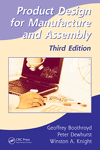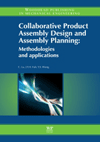X-Y-Z: Slotless, Brushless Motors Provide Smooth Motion
If Nikola Tesla had access to high-strength adhesives, solid-state electronics and rare earth magnets in 1888, the debate between George Westinghouse and Thomas Edison over AC vs. DC electricity might have ended differently. Instead of his classic AC induction motor, Tesla might very well have designed a slotless, brushless DC motor.
Permanent-magnet DC brush motors are commutated mechanically. As the rotor turns, pairs of commutator bars contact the brushes in succession, connecting electrical power sequentially to different sets of armature windings, which keeps the rotor turning. The main drawback of these motors is that the brushes wear out and must be replaced. In addition, arcing between the brushes and the commutator causes electrical noise.
Brushless DC motors eliminate these problems. In a brushless motor, the magnets are on the rotor, and the windings are wrapped around poles on the stator. Instead of brushes and a commutator bar, the windings are switched on and off sequentially by solid-state electronics. Besides needing less maintenance, brushless motors are smaller, lighter and more efficient than brush motors with comparable outputs.
However, brushless motors have a drawback, too. Traditionally, brushless motors have slotted stators. The stator consists of slotted iron laminae that are fused to form a solid, uniform stack. The slots form rows that extend the length of the stack, and the windings are inserted into each row. As the rotor turns, the magnets are more attracted to the stator’s teeth than the gaps between them. This uneven magnetic pull, called cogging, reduces the motor’s efficiency and makes it difficult to produce smooth motion at low speeds.
“With slotted motors, you can take steps to reduce cogging, but there’s always a performance penalty,” says M. Eugene Bradshaw, manager of brushless motor engineering at Pittman (Harleysville, PA). “For example, you might need a little more power to run the motor, which will reduce its continuous torque capability. With a slotless design, you don’t have that penalty.”
In a slotless, brushless motor, the stator has no slots to keep the windings in place. Instead, the windings are attached to the inside surface of the stator with adhesive. “The windings form a tube, which is inserted into another tube, the stack,” explains Albert Birkicht, vice president of research and development with the Portescap Div. of Danaher Motion (West Chester, PA).
With no teeth to attract the magnets, cogging is eliminated, and the motor produces smooth, quiet rotation. The absence of teeth also provides room for larger magnets in the rotor and more wire in the windings, which means that slotless motors can generate more torque without a corresponding increase in size.
Additionally, the slotless design significantly reduces damping losses. In both slotted and slotless motors, eddy currents are induced as the magnets pass the stator. However, these currents are weaker in slotless motors, because the distance between the stack and the magnets is greater than in slotted motors. This makes slotless, brushless motors more efficient than slotted motors.
ThinGap Motor Technologies (Ventura, CA) has taken the slotless, brushless concept one step further. Instead of using standard round wire for the windings, ThinGap uses precision-machined copper sheet metal to increase the copper density in the “windings.” As a result, the motors have an extremely high efficiency and power density, says Gerald W. Yankie, ThinGap’s president.
Because of their cog-free operation, slotless, brushless motors are used in applications requiring smooth, precise motion at low speeds, such as plotters, positioning stages, medical imaging equipment, aircraft controls and electrical discharge machining equipment. The motors are also ideal for applications that require fast, accurate positioning from a small package, such as nutrunners and computer tape drives.
Looking for a reprint of this article?
From high-res PDFs to custom plaques, order your copy today!






